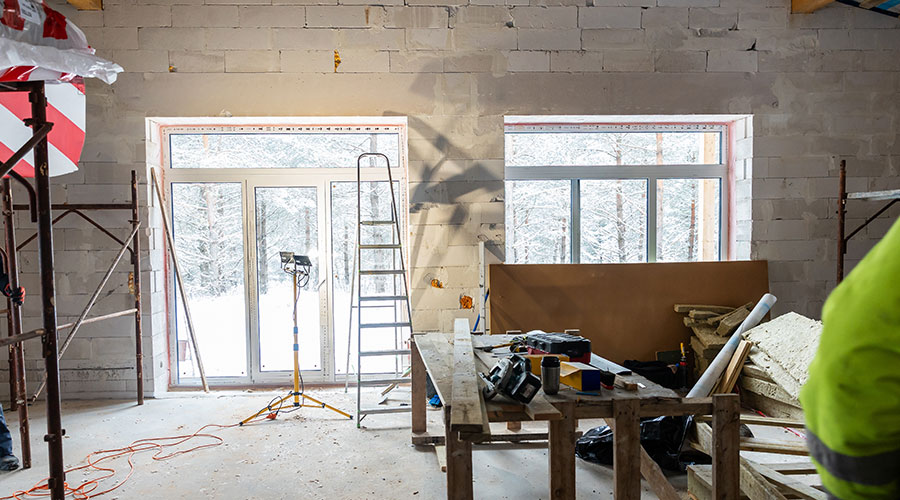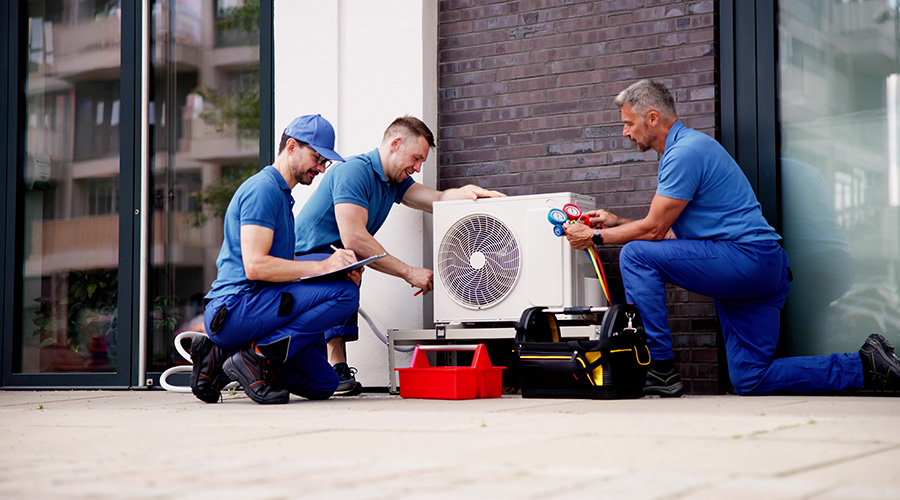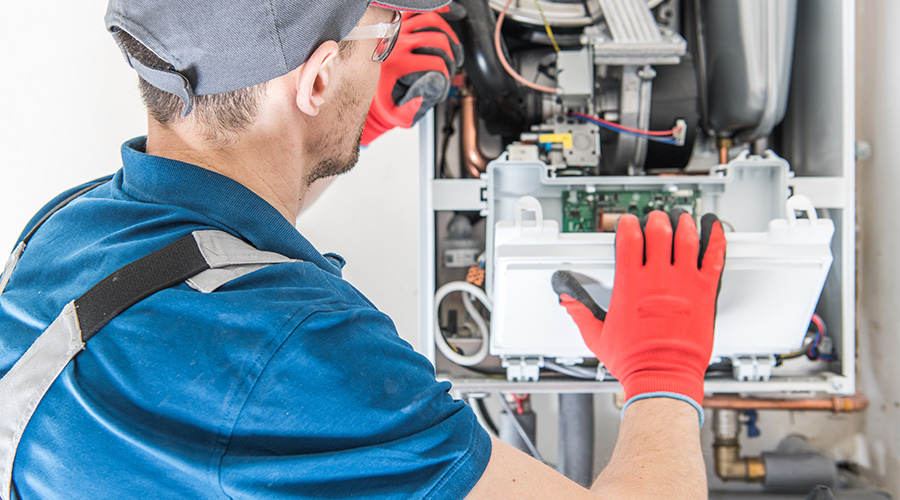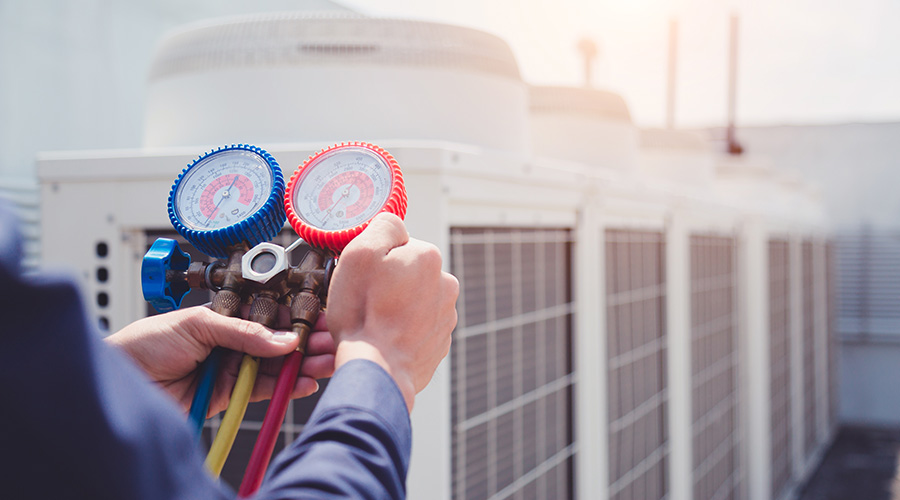Common HVAC Missteps and Myths
From neglected water treatment systems to misused CMMS platforms, HVAC manufacturers call out common mistakes and debunk widespread misconceptions.
Planning maintenance schedules is one thing but executing them effectively is another. Facility departments may know their systems inside and out, but a number of recurring issues continue to plague even the most experienced teams. Compounding the problem are lingering myths such as the belief that dormant humidifiers don’t need attention, or that newer HVAC systems require little upkeep.
In this manufacturer roundtable, Facility Maintenance Decisions spoke with HVAC manufacturers to break down where facilities are falling short and to set the record straight on what it takes to maintain HVAC systems for long-term performance and efficiency.
FMD: Generally, what mistakes do facility departments make when planning their maintenance schedules? Where could they improve their ITM of HVAC?
“Many facility departments still rely on a reactive maintenance approach, waiting for failures to occur before acting. A key oversight is neglecting manufacturer-recommended ITM schedules, particularly for humidity control systems. These systems are often viewed as secondary, yet they play a critical role in maintaining indoor air quality, protecting equipment and supporting occupant comfort. Similarly, water treatment systems are frequently ignored until visible scaling or system failure forces attention, but costly damage may already be done by then.
Pro tip: Make humidity control and water treatment a core part of your preventive maintenance plan. Routine inspection of dispersion panels, flushing of steam tanks and regular water quality testing can significantly improve system reliability, prevent performance decline and reduce unplanned service calls.”
— Dave Schwaller, inside sales manager, DriSteem
“Most issues don’t arise during the planning phase but during execution. One of the biggest challenges is consistently sticking to the schedule - something that often falls apart when departments get busy or unexpected projects arise.
A major contributing factor is the improper use or neglect of CMMS (Computerized Maintenance Management Systems). When these tools are underutilized, it leads to poor documentation, inconsistent asset tracking, and a lack of visibility into maintenance costs and system performance.
Another common mistake is failing to match the complexity of tasks with the right personnel. Maintenance plans should account for the skill level of team members. Assign simpler tasks to less experienced team members, and reserve more complex or critical work for experienced tradespeople to maximize efficiency and reduce the risk of errors.”
— Kevin Cassidy, maintenance project manager, SSC Services for Education
“While they’re knowledgeable experts on their buildings and the equipment that keeps them running, many facility departments don’t have the tools to enable predictive maintenance that prevents potential issues before they escalate, leaving them to react to disruptions as they arise.
Technologies that offer a real-time, unified view of HVAC systems and building operations more broadly can help provide the real-time insights necessary to maintain efficient, consistent operations. Access to this level of data, in addition to analysis by expert partners, offers a clearer picture of what maintenance should be immediately prioritized, as well as what should be prioritized on an ongoing basis to avoid costly emergency situations.”
— Buddy Saucier, VP, service operations/cross-domain harmonization, Johnson Controls
FMD: What misinformation is out there regarding HVAC maintenance that you think needs to be corrected?
“A common misconception is that water treatment is only necessary in areas with visibly hard water. In truth, poor water quality impacts all humidification systems, regardless of location, causing premature scale buildup, corrosion and early component failure if left unmanaged.
Another widespread myth is that humidifiers don’t need maintenance when they’re not in use. In reality, standby systems are still vulnerable to scale accumulation, stagnant water and microbial growth. Without regular flushing and monitoring, these idle systems can quickly become unreliable. Facility managers should recognize that even inactive equipment requires periodic maintenance to ensure long-term performance and safety.”
— Dave Schwaller, inside sales manager, DriSteem
“A lot of misinformation stems from a lack of understanding of HVAC fundamentals. It’s critical to know that every piece of equipment has its own set of operating parameters and maintenance requirements. There is no one-size-fits-all approach.
Common oversights include:
- Failing to follow basic maintenance guidelines specific to each asset.
- Not understanding the acceptable operating ranges for temperature and pressure.
- Not keeping the Operations and Maintenance (O&M) manual readily available. These manuals are essential references and can often be found online or requested from the manufacturer.
- Having a solid grasp of equipment-specific requirements is foundational to effective maintenance.”
— Kevin Cassidy, maintenance project manager, SSC Services for Education
“A common misconception about HVAC maintenance is if a system is of a certain age, it’s not worthwhile to invest in system maintenance and upgrades, and, conversely, if an HVAC system is new, regular maintenance is not needed. An old system, for example, can be continually updated with options like zone filtration and disinfection to increase clean air delivery rates. On the other hand, while new systems might have the latest technologies and approaches, performance must be monitored from day one and regularly updated to ensure the desired results are achieved.
Setting up an HVAC system is not a one-and-done deal. No matter how old or new the system is, ongoing monitoring and maintenance is essential to maintaining optimal results.”
— Buddy Saucier, VP, service operations/cross-domain harmonization, Johnson Controls
Jeff Wardon, Jr., is the assistant editor of the facilities market.
Related Topics:














